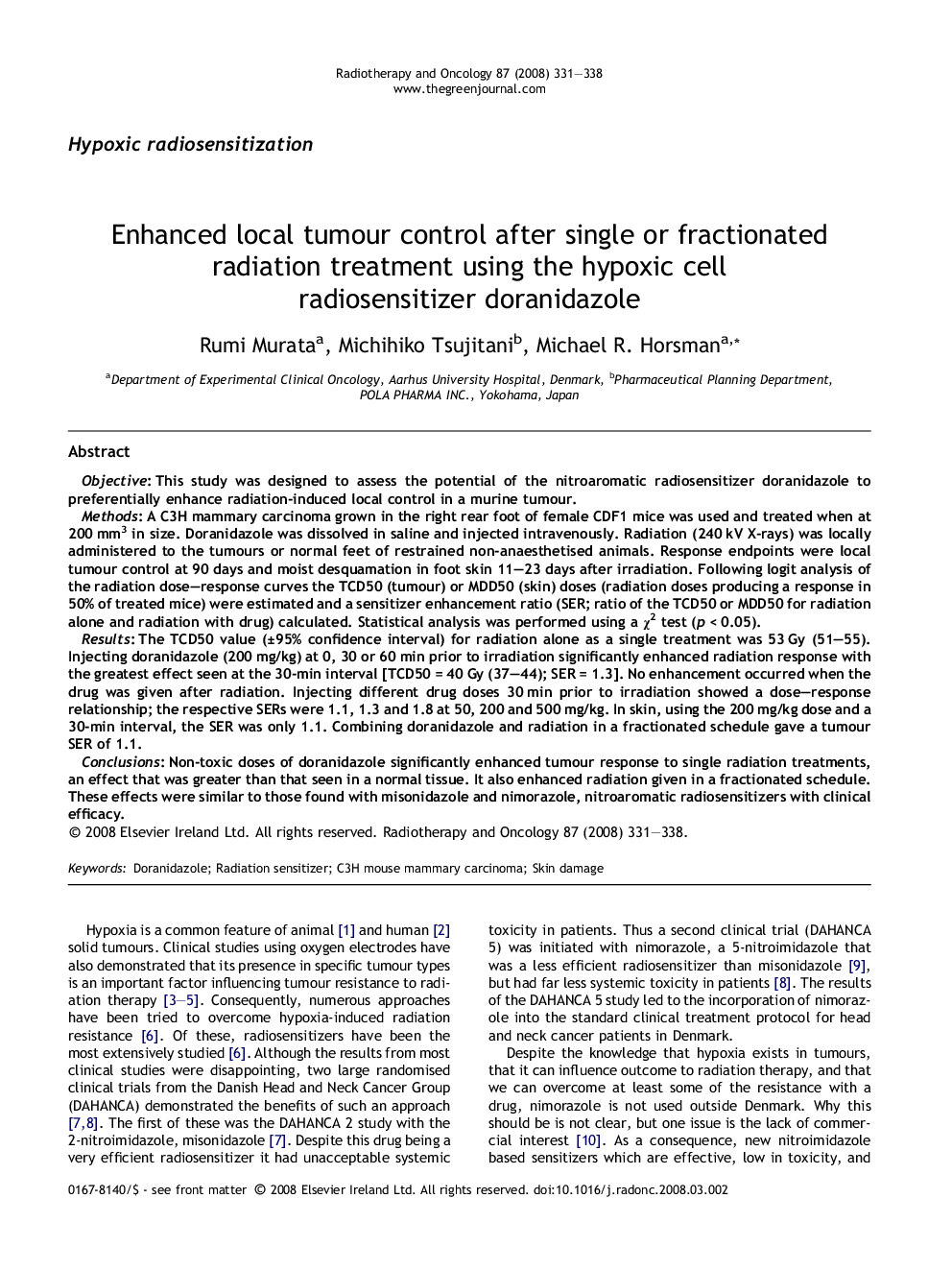| Article ID | Journal | Published Year | Pages | File Type |
|---|---|---|---|---|
| 2160348 | Radiotherapy and Oncology | 2008 | 8 Pages |
ObjectiveThis study was designed to assess the potential of the nitroaromatic radiosensitizer doranidazole to preferentially enhance radiation-induced local control in a murine tumour.MethodsA C3H mammary carcinoma grown in the right rear foot of female CDF1 mice was used and treated when at 200 mm3 in size. Doranidazole was dissolved in saline and injected intravenously. Radiation (240 kV X-rays) was locally administered to the tumours or normal feet of restrained non-anaesthetised animals. Response endpoints were local tumour control at 90 days and moist desquamation in foot skin 11–23 days after irradiation. Following logit analysis of the radiation dose–response curves the TCD50 (tumour) or MDD50 (skin) doses (radiation doses producing a response in 50% of treated mice) were estimated and a sensitizer enhancement ratio (SER; ratio of the TCD50 or MDD50 for radiation alone and radiation with drug) calculated. Statistical analysis was performed using a χ2 test (p < 0.05).ResultsThe TCD50 value (±95% confidence interval) for radiation alone as a single treatment was 53 Gy (51–55). Injecting doranidazole (200 mg/kg) at 0, 30 or 60 min prior to irradiation significantly enhanced radiation response with the greatest effect seen at the 30-min interval [TCD50 = 40 Gy (37–44); SER = 1.3]. No enhancement occurred when the drug was given after radiation. Injecting different drug doses 30 min prior to irradiation showed a dose–response relationship; the respective SERs were 1.1, 1.3 and 1.8 at 50, 200 and 500 mg/kg. In skin, using the 200 mg/kg dose and a 30-min interval, the SER was only 1.1. Combining doranidazole and radiation in a fractionated schedule gave a tumour SER of 1.1.ConclusionsNon-toxic doses of doranidazole significantly enhanced tumour response to single radiation treatments, an effect that was greater than that seen in a normal tissue. It also enhanced radiation given in a fractionated schedule. These effects were similar to those found with misonidazole and nimorazole, nitroaromatic radiosensitizers with clinical efficacy.
